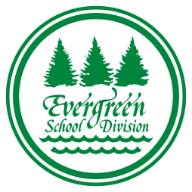Reconciliation Will Be A Long Road
In 2009, the Truth and Reconciliation Commission (TRC) of Canada began a journey to tell the story of over 150,000 Indigenous children whom attended residential schools in Canada. Many of the theses children never returned home. The schools were often over crowded and underfunded and were openly used as a tool by churches and the government of Canada to assimilate and destroy their culture. In 2013, historian Ian Mosby even uncovered that students in some schools were the subject of nutritional experiments where their diets were restricted to determine what health problem would occur.
There can be no doubt about what the purpose of residential schools were as in 1879 the Davin Report which created the system stated openly;
"take the Aboriginal child from the reserve and keep him from...the retarding influence of his culture and parents"
Thus in 2015 when the TRC completed it findings and made 92 recommendations it was hailed as the beginning of a new era and new relationship between Canada and its indigenous people. Despite these glossy predictions we were all reminded recently how difficult a process this will yet be when a Senator stated that the TRC overlooked the "good deeds" the residential schools accomplished. The difficulty for Canadians to come to terms to what was done to these children and subsequently their culture and communities, seems only amplified by the facts that an apparently prominent Canadian and politician continues to ignore and dismiss the harm that was done. Change is never easy and change centered around an event of great pain and suffering will be even more difficult.
As educators I think its useful to remember that education by its nature is the "long game" approach to change. One moment, one child at a time is the currency we trade in. Combatting ignorance and prejudice is our work if we are truly to prepare our students to be contributing citizens in a democratic society, as the Evergreen School Division mission plan directs.
Fortunately, there are the means at hand to help us in this process. Our school division has a very active Aboriginal Education program, led by Penny Ross, and two programs in particular can support the work and recommendations of the TRC. Penny is actively providing Treaty Education to students across the division, and she is supported in this effort by 13 ESD teachers who have also received the training. The committee is planning to provide additional Treaty Education training to teachers over the next few years with the goal of having most if not all of our teachers able to provide this program to students. Additionally, Penny has been collaborating with several teachers across the division, including DGJMS' own Kelly Croy, in guiding students through the "Blanket Exercise" where they simulate the experience of colonization indigenous people went through, including that of residential schools. I know these opportunities have been well received at our school and I encourage other teachers to reach out to Penny and do the same for their students.
I also encourage teachers to keep their eyes open for Treaty Education opportunities when they arise. The TRC report is complete and their offices are closed. The work of reconciliation now leads through each classroom and school. The words of this Senator reminds us its work that needs to be done, and its work that worth doing.


